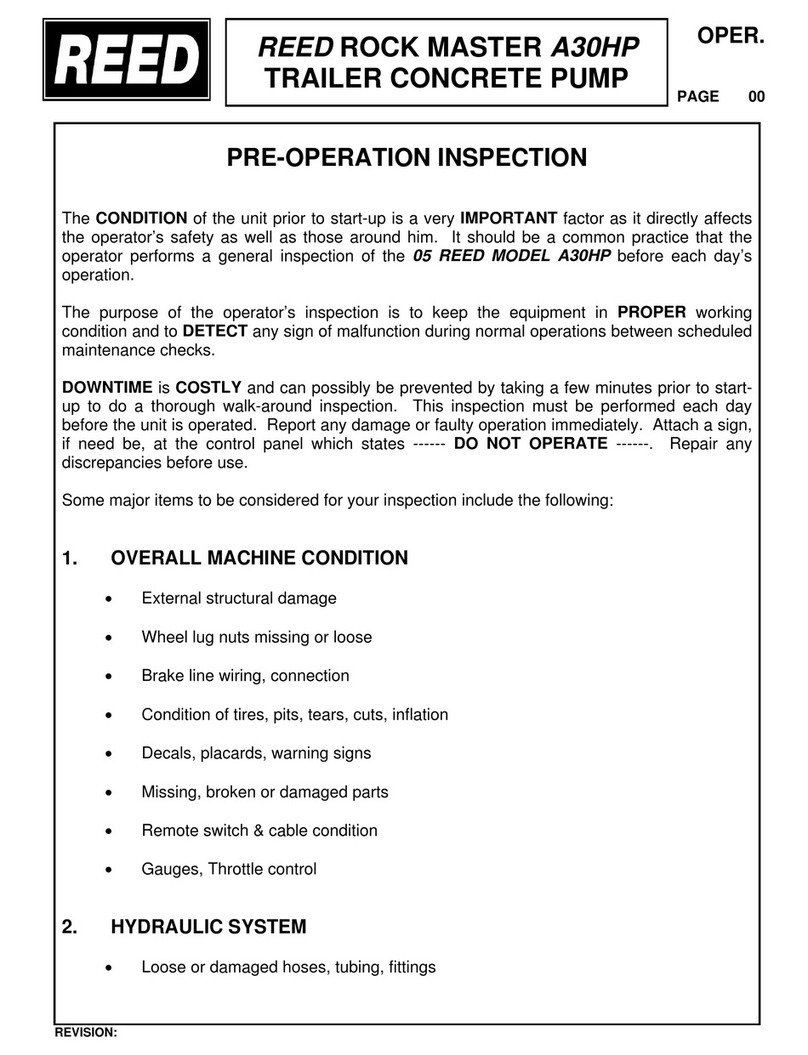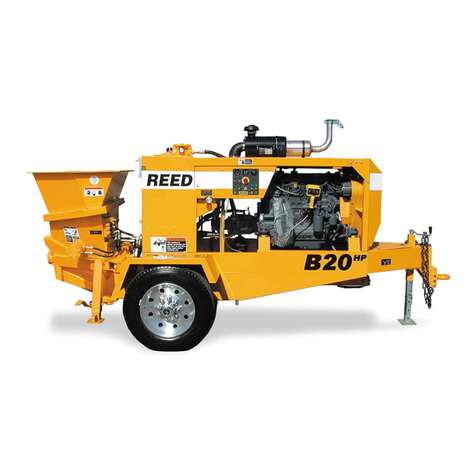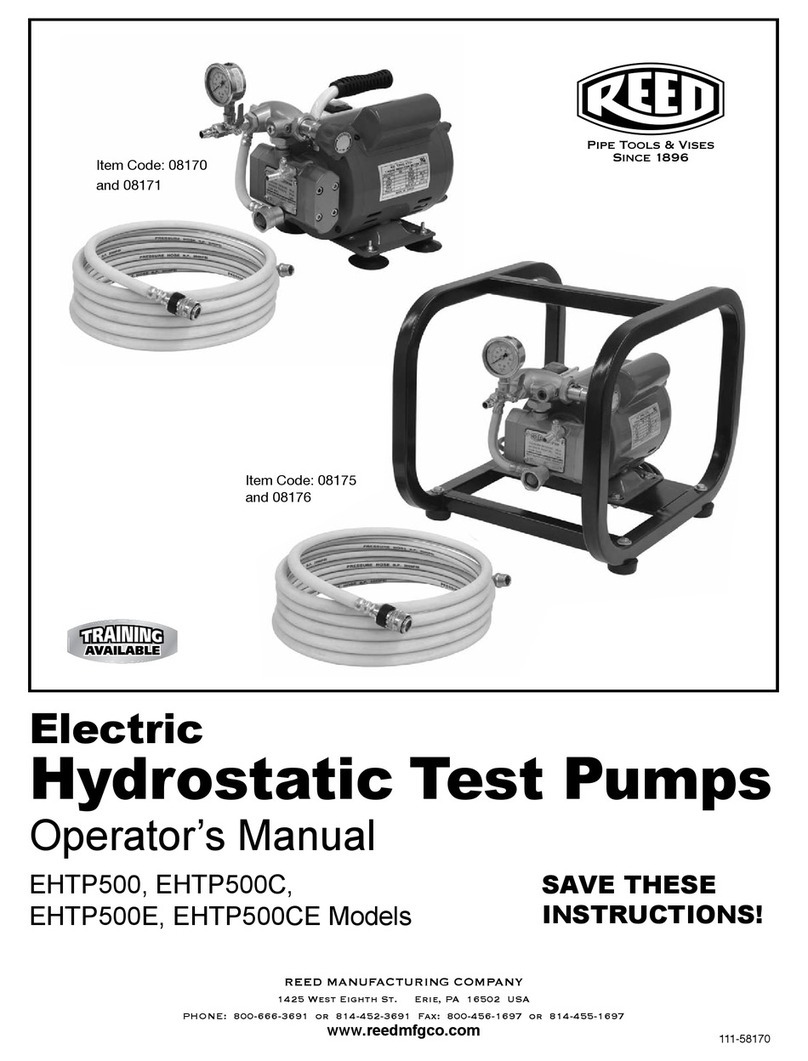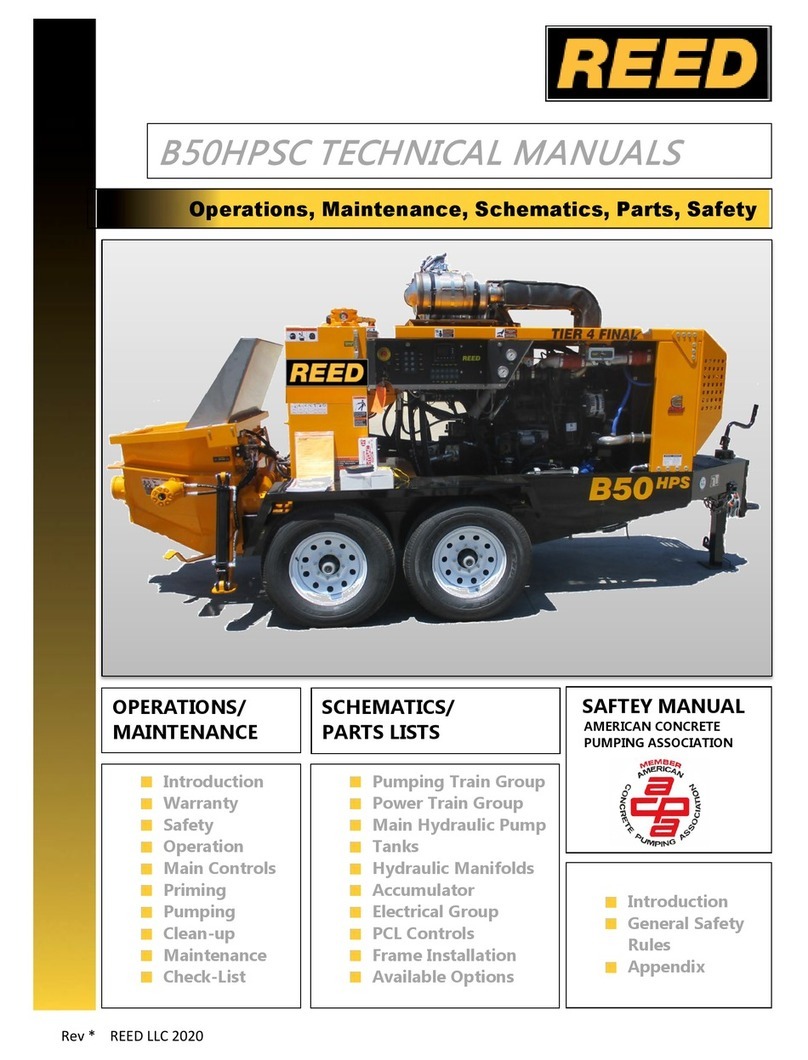
1120-54339
7. Select both pipe stops based on pipe diameter and SDR.
Position both pipe stops so that the corresponding at
is facing the bottom squeeze bar. Stops must match one
another.
8. Adjust the pump lever to the squeeze position. Pump
using handle to raise pressure. As the squeeze bars move
closer together and the 4 saddle bolts begin to rise,
continually hand thread in the saddle bolts. Recommended
squeeze rate to avoid pipe damage is 2.0 inches/min.
Pump until pipe stops are contacted or 10,000 psig is
reached. If 10,000 psig is reached wait for the pipe to relax
(10-15 min.) and pump back up to pressure.
CAUTION: Stop pumping when pipe stops contact bottom
squeeze bar, further pumping will cause tool damage.
NOTE: Pipe stops don’t need to contact bottom squeeze bar in
order to satisfactorily control ow.
9. IMPORTANT: Ensure all
4 saddle bolts are hand
tight and the saddle
bolt heads are in contact
with the top saddle
clamps.
PART 2: DISCONNECTING
HYDRAULICS DURING
SQUEEZE (optional)
1. Quickly adjust the pump
valve to the neutral position.
NOTE: Adjusting the pump lever under pressure may take
more effort – this is normal.
2. Slowly move the pump valve to the squeeze position, until all
pressure is on the saddle bolts. Pressure gauge should read
zero (0).
3. The hydraulics can now be disconnected.
Phone: 800-666-3691 or +1-814-452-3691
reedsales@reedmfgco.com
www.reedmfgco.com
Reed Manufacturing
1425 West 8th Street
Erie, PA 16502 USA
This stop position (at bottom) is set to squeeze 6” 15.5 DR
pipe. Stops on both sides of tool must match for proper use.
And, desired setting must be in this bottom orientation.
PART 3: RELEASING PE PIPE
1. Reconnect hydraulics and adjust the pump lever to the
squeeze position. Pump to raise pressure until the saddle
bolts are loose enough to rotate.
2. IMPORTANT: Loosen and fully disengage threads on the
4 saddle bolts before releasing pipe.
3. Quickly adjust the pump valve to the neutral position.
NOTE: Adjusting the pump lever under pressure may take
more effort – this is normal.
4. Slowly and carefully move the pump valve to the release
position, while carefully watching the squeeze bars for
movement. Move lever back to neutral as necessary to
maintain desired release rate. The recommended release rate
to avoid pipe damage is 0.5 inches/min.
5. When the squeeze bars no longer open due to pipe pressure,
move the pump lever to the release position. Pump until there
is enough room around the pipe to remove the tool.
6. Remove the latch pin and swing bottom squeeze bar clear of
the pipe. Remove the tool from the pipe.
PART 4: CARE AND MAINTENANCE
1. Wipe down and clean the tool.
2. Store in a dry place with tool in the closed position.
*SDS sheets are on le with Reed Manufacturing and can be
found online at www.reedmfgco.com. For the Bear Hug™ series,
REED uses an SDS for AW Hydraulic Oil ISO 46.

























